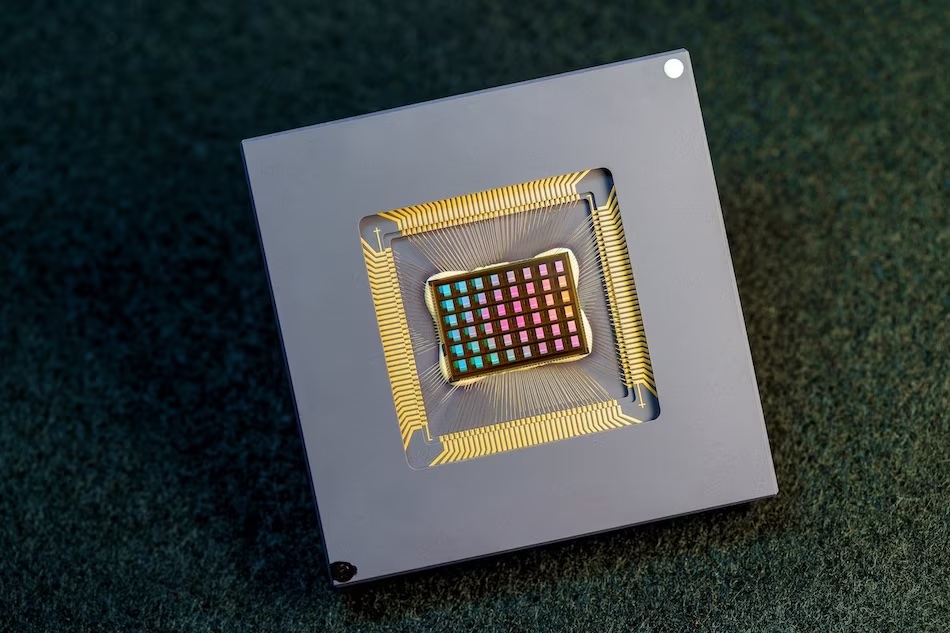Have a story idea
Have a story idea? Send it to us here.

Source : Jacobs School of Engineering, UC San Diego, Creative Commons
August 4, 2023
Author : Patty Allen
A country's growth is measured by its infrastructural and industrial development.
The CHIPS and Science Act, which was enacted last year with bipartisan support from Congress, was widely regarded by industry leaders and politicians as a strategic measure to enhance supply chain security, increase investment in research and development, and restore the United States' competitiveness.
The US is experiencing a factory-building boom as the government provides many incentives and investments to boost home-grown manufacturing potential. Investment in hi-tech production will expand employment opportunities across numerous sectors, not to mention prove vital for the long term health of the country.
According to the U.S. Census Bureau data, construction spending by manufacturers has more than doubled in the last year, hitting an annual rate of about $190 billion in April.
Manufacturing now accounts for over 13% of total non-government buildings. The factory-building surge comes as residential construction has seen a significant decline. It also comes at a time when industry in Europe, in particular Germany, face growing challenges with skyrocketing energy prices.
As part of the most ambitious US industrial policy in decades, the federal government is offering tens of billions of dollars in subsidies to companies that manufacture various vital items, from semiconductors to electric cars and their components.
Intel Corp. is investing $20 billion to develop a chip fabrication plant in Ohio, and Ford Motor Co., which began groundwork last year on a Tennessee factory that will create electric trucks, are among the major US businesses to get on board.
Ford has received a $9.2 billion conditional loan from the US Department of Energy’s Loan Programs Office to manufacture three battery factories.
The new facilities that would eventually serve Ford's EV expansion are already under construction in Kentucky and Tennessee as part of a BlueOval SK joint venture owned by the Michigan automaker and South Korean battery giant SK On Co. Ford intends to create up to 2 million EVs by 2026, a significant increase from the roughly 132,000 it produced last year.
Ford's vehicles and SUVs powered by American batteries will also be eligible for billions of dollars in incentives in the $370 billion clean-energy financing in the Inflation Reduction Act.
The US government will subsidize battery manufacture, and customers may be eligible for further tax breaks of up to $7,500 per vehicle.
Following the Inflation Reduction Act (IRA), a rush of incentives, government funding, and private-sector investment has resulted in a manufacturing boom. Over 100 battery and electric-vehicle manufacturing projects have been announced or are now under development, totaling over $200 billion in total investment.
Contractor News previously reported how Hyundai and LG Energy Solution are working together to build a $4.3 billion EV battery plant in Bryan County, Georgia, planning to employee 3,000 people.
Syracuse, a city in upstate New York, is poised to serve as an economic experiment to determine whether proactive government policies and substantial corporate investments can effectively enhance the nation's manufacturing capabilities. The process commences with a highly sophisticated and costly manufacturing facility known as a chip fab.
Micron, a prominent manufacturer of memory chips headquartered in Boise, Idaho, announced its strategic intention to construct up to four fabrication plants, commonly known as fabs, at the Clay site. Each of these fabs is estimated to require an investment of approximately $25 billion. Micron aims to complete this ambitious project within 20 years. A corporate investment of $100 billion holds significant implications for any city, and in the case of Syracuse, it offers the potential for a transformative change in its economic prospects.
Certain funds from the Chips Act are being allocated to regions with a well-established chip manufacturing industry. Taiwan Semiconductor Manufacturing Company (TSMC) has made a substantial investment of $40 billion to establish new fabrication facilities in Phoenix, Arizona. Additionally, Intel is in the process of constructing fabrication facilities near Chandler.
The objective of the CHIPS Act is not solely focused on constructing large manufacturing facilities but also aims to foster the development of regional economic clusters through these investments.
Category : Economic Stimulus Efficiency-Improving Technology Entrepreneurialism Federal Government Green Economy International Market Watch Tech
